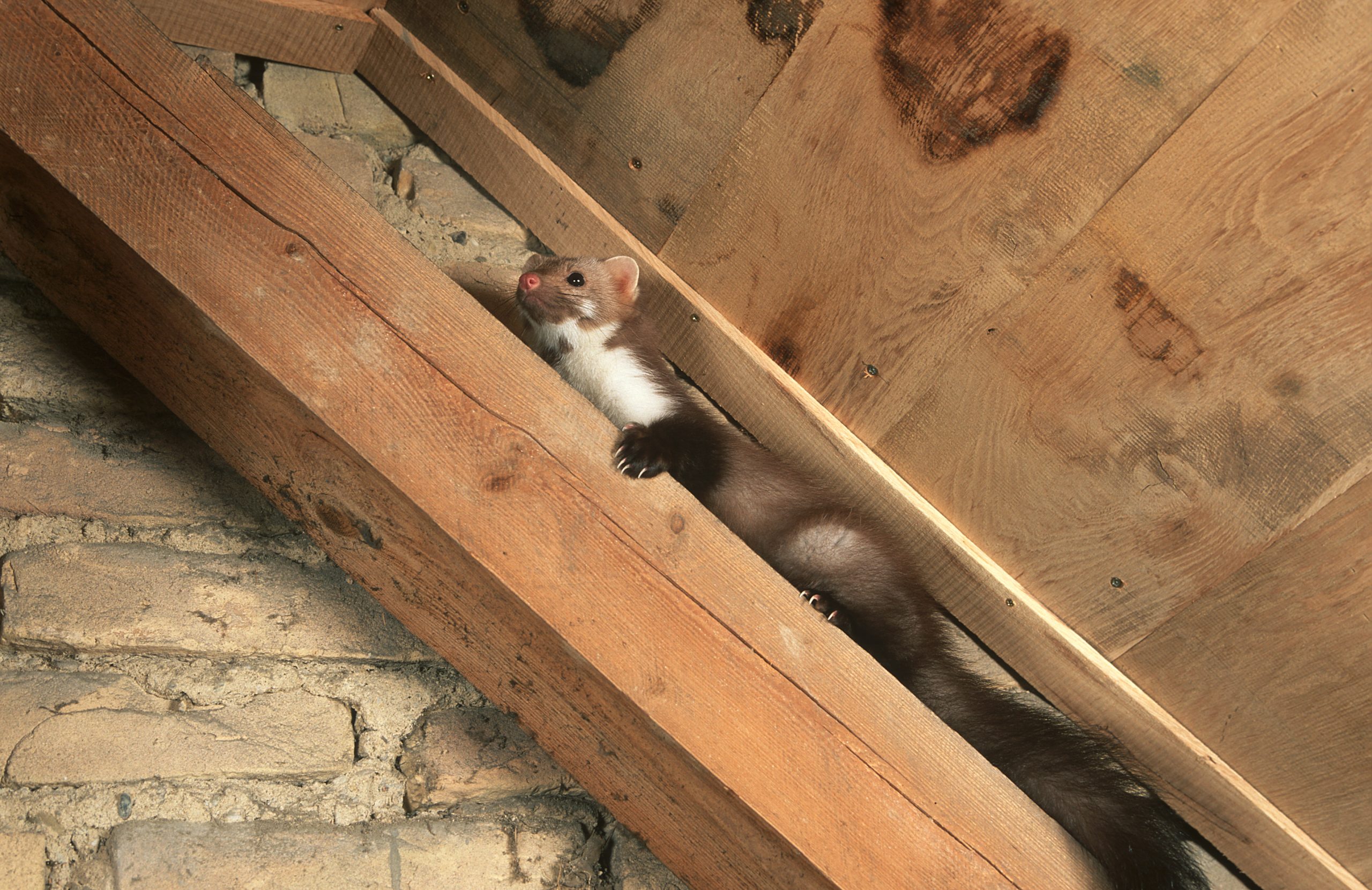
Detecting and repelling martens in the loft
Martens in the loft can cause considerable damage and be a major nuisance. They cause noise, destroy insulating material and leave behind unpleasant odors. In this guide, you will learn how to recognize the presence of martens, what damage they can cause and how to effectively drive them away.
1. why are martens a problem in the loft?
Martens, especially the stone marten (Martes foina), often seek shelter in human dwellings. The attic offers them a warm, dry and safe shelter. The problems caused by martens are manifold:
a. Noise pollution
Martens are nocturnal and often make loud noises such as scratching, trampling or rumbling, which are particularly disturbing during the quiet hours of the night.
b. Damage to the building fabric
- Insulation material: Martens gnaw and shred insulation materials to build nests.
- Cables and wires: They can chew through electrical cables, which can cause short circuits or even fires.
- Wood structures: Scratch and gnaw marks on wooden beams and other structures.
c. Hygienic problems
- Droppings and urine: Martens leave behind droppings that cause unpleasant odors and pose health risks.
- Parasites: Fleas, ticks and other parasites that martens bring with them can spread throughout your home.
2. detection of martens in the attic
a. Typical signs
- Noises: scratching, trampling and rumbling, especially at night.
- Droppings: Marten droppings are about 8 to 10 cm long, sausage-shaped and often slightly curved with pointed ends. The droppings may contain hair, feathers and other remains of prey.
- Gnaw marks: On cables, insulation materials and wooden beams.
- Odor: A strong, unpleasant smell of urine and feces.
3. measures for marten defense
a. Preventive measures
- Seal off entry points: Check your attic for possible entry points such as holes, gaps or damaged roof tiles and seal them with robust materials such as metal grids.
- Regular inspections: Carry out regular inspections of your loft to detect signs of marten infestation at an early stage.
b. Defense methods
Odorants and household remedies
- Marten sprays: These often contain strong-smelling substances that deter martens.
- Home remedies: Dog hair, mothballs or vinegar can also help to repel martens.
Technical aids
- Ultrasonic devices: These emit high-frequency sounds that are inaudible to humans but extremely unpleasant for martens.
- Light and noise: Motion detectors that trigger light or noise when movement is detected can deter martens.
Physical barriers
- Marten barriers: Metal grids or special barriers can be installed at potential entry points to prevent access.
4. professional help
If you are unable to get rid of the marten yourself, or if the infestation is severe, you should call in professional pest controllers. These can be:
- Identify and seal entry points.
- Set up traps and relocate martens professionally.
- Repair damage and carry out hygiene measures.
5. long-term strategies
To keep martens out of your loft in the long term, you should pursue the following strategies:
- Continuous monitoring: Check the condition of your loft regularly and look out for new signs of marten infestation.
- Maintenance and servicing: Repair any damage to the roof and building fabric immediately to avoid potential entry points.
- Sustainable repellents: Rely on a combination of structural measures, odorants and technical aids.
Conclusion
The presence of martens in the loft can cause considerable problems, but with the right measures you can effectively repel these animals. Identify the signs of infestation at an early stage and act quickly to minimize damage. Preventive measures and continuous monitoring are the key to keeping your home marten-free in the long term. If necessary, you should not hesitate to seek professional help to ensure a sustainable solution.
